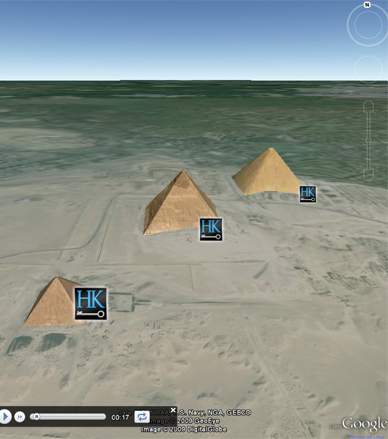During a recent lecture I attended by astronomer Paul Murdin, which was hosted by Heritage Key, I learnt something which fascinated me. One of the commonly held beliefs has been that ancient societies before the Age of Discovery believed that the world was flat, but when I raised this during the Q&Asession after the lecture, I was surprised that this is what is known as ‘The Myth of the Flat Earth‘.
That’s not to say there’s nothing in the belief that our ancestors feared falling off the edge of the world. Some ancient civilisations did indeed think that the world was flat, stemming from some of the world’s oldest writings, such as the Epic of Gilgamesh which says “for on that mountain top we can capture Humbaba and hurl his earthly form fromtowering cliffs through sky toearth, making his shapeas flat and wide as it is round and high.” Such interpretations of various ancient scriptures led to the common belief of the Flat Earth within early Mesopotamian, Ancient Egyptian, early Greek and pre-classical Indian society. Indeed, the Chinese didn’t question the Flat Earth theory until the arrival of Western Astronomical studies in the 17th Century AD!
However, as early as the 6th Century BC, Pythagoras had declared that the planet was a spherical body, even though many of his peers held the belief that it was flat. It wasn’t until Aristotle offered evidence of the Earth being a sphere around 330BC, observing how the constellations appeared higher above the horizon in the southern regions than they did in the northern regions, and that elevated lights were visible to sailors from further distances than those at low-lying ground level.
According to the historian Stephen Jay Gould (Dinosaur in a Haystack: Reflections in Natural History, 1996), the Greek knowledge of a spherical Earth has been held throughout the Middle Ages and never faded to the modern day. The supposed period of ‘Flat Earth Darkness’ is simply a modern misconception of history – Christian scholars were fully aware of Earth’s spherical shape and even were able to calculate the circumference of the planet.
HD Video: Episode 10 – Archaeoastronomy
Click here to view the transcript of this video.
So how did we get it so wrong in the modern age?Fingers point to an 1820s publication The Life and Voyages of Christopher Columbus by Washington Irving – a biographical account which, as it turns out, is littered with errors. Irving made the claim that Columbus faced heavy opposition to his theory that the world was a sphere, when in actual fact, 14th Century academics did not question that the world was spherical, but rather were attempting to calculate the size of it as they did not believe they could make it to Japan on the supplies they planned to take.
Irving’s account also made the claim that Columbus’ ship crew feared that they would sail right off the edge of the Earth. Again, this is balderdash – the actual fear of the crew was that they were running low on food, and their supplies would sustain them for as long as it would take to reach Japan. Of course, Columbus did make it to land and inadvertently discovered the Americas, rather than making the journey to Japan. The academics (and crew) were right – they would never have made it to Japan on the supplies they’d taken.
 Another book published a few years later in 1834 by Jean Antoine Letronne entitled On the Cosmographical Ideas of the Church Fathers misrepresented the Church as holding onto the belief of a Flat Earth. Such written accounts in modern times have contributed to our commonly held assumptions about our Medieval and Ancient ancestors’ belief in the Flat Earth.
Another book published a few years later in 1834 by Jean Antoine Letronne entitled On the Cosmographical Ideas of the Church Fathers misrepresented the Church as holding onto the belief of a Flat Earth. Such written accounts in modern times have contributed to our commonly held assumptions about our Medieval and Ancient ancestors’ belief in the Flat Earth.
So surely the Flat Earth Theory is completely expunged now, as we constantly criss-cross the globe and occasionally launch into outer space?
Not quite – there are a small group known as the Flat Earth Society who hold the firm belief that the Earth is flat, and that idea of a spherical world is actually an international conspiracy fabricated by scientists, space agencies and governments. Writing off copious amounts of evidence which proved the spherical nature of the Earth, and of course, claiming the Moon landings as being fake, the Flat Earthers cling to the idea, even though our ancestors didn’t.
 Continuing the Google Earth Tours here at Heritage Key, which have so far covered
Continuing the Google Earth Tours here at Heritage Key, which have so far covered